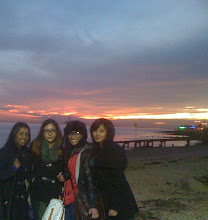Domestic Violence is any type of ongoing violence that takes place within an intimate or family-type relationship. This can include forced marriage and so-called 'honour crimes'. Domestic violence is more then just unprovoked physical violence, there are many other signs such as verbal abuse, lying to you (like having an affair), and even isolation like monitoring your telephone calls and telling you were you can and can’t go.
There are many different theories as to the causes of domestic violence. These include psychological theories that consider personality traits and mental characteristics of the offender, as well as social theories which consider external factors in the offender's environment, such as family structure, stress, social learning. Social learning refers to learning through observation, for example when growing up if the attacker was in a family environment which suffered from domestic violence, that may be the only experience they have of family life and imitate it within their own families. As with many phenomena regarding human experience, no single approach appears to cover all cases. Other factors associated with domestic violence include heavy alcohol consumption and side effects of drug addiction.
From personal accounts, we found that domestic violence is all about power and control. The victim completely looses their self-esteem and therefore may feel as if it is their fault. “He made me feel so bad about myself… that I believed I deserved that kind of treatment…” (Amelia’s story). They try to control every aspect of the persons life with fear, like Danna explains, “I would be locked in it for days and the hardest part is that there wasn't even a lock on the door, I was so afraid to leave the room I may as well have been locked in it, only leaving to ask permission to go to the toilet.” This shows that the attacker had so much control that he wouldn’t even have to forcefully isolate his victim in one room with a lock, he had instilled so much fear in his victim that she was terrified of the consequences if she left. This begins to explain why some victims find it hard to leave a violent relationship, because if they are so afraid to leave a room that isn’t locked how they are supposed to leave the whole relationship. Statistics from Humphreys & Thiara, (2002) showed that 60% of women that finally left did so because they felt that their or their children would have been killed if they stayed. Also it isn’t generally an irrational fear of being killed because on average two women a week are murdered by their violent partner or ex-partner (Povey, 2005; Home Office, 1999; Department of Health, 2005.)
In terms of representation issues, statistics shows 89 per cent of victims are women and women under the age of 30 are at considerably greater risk than those over the age of 40 years (British Crime Survey, Walby & Allen, 2004). With regards to ethnicity and social class there isn’t much evidence that provides a difference of statistics within the groups, therefore this information provides the idea that we should use a young female victim.
From looking at other music videos which theme around domestic violence we see how they choose to express the issue. Because domestic violence is a serious problem we need to take on the issue delicately whilst making a impact on the audience. A really good shot I noticed in both Eve- Love is blind (1999) and Ashanti- Rain on me (2003), is the mirror shot were the girl is like fixing her makeup in the mirror and the camera is focused on the mirror therefore we can see her reflection and her facial expressions -If done right it can be very effective. Another key technique I saw, was instead to showing physical violence which can be disturbing or if not done professionally can look “comical”, show a shadow of violence which can imply the abuse but not show it directly.
Our research into domestic violence has given us a broader understanding of domestic violence in the UK, which in turn will help us produce a music video with a realistic outlook on domestic violence situations.
By Ameera Tayabali
Sunday, 22 November 2009
Subscribe to:
Post Comments (Atom)


No comments:
Post a Comment